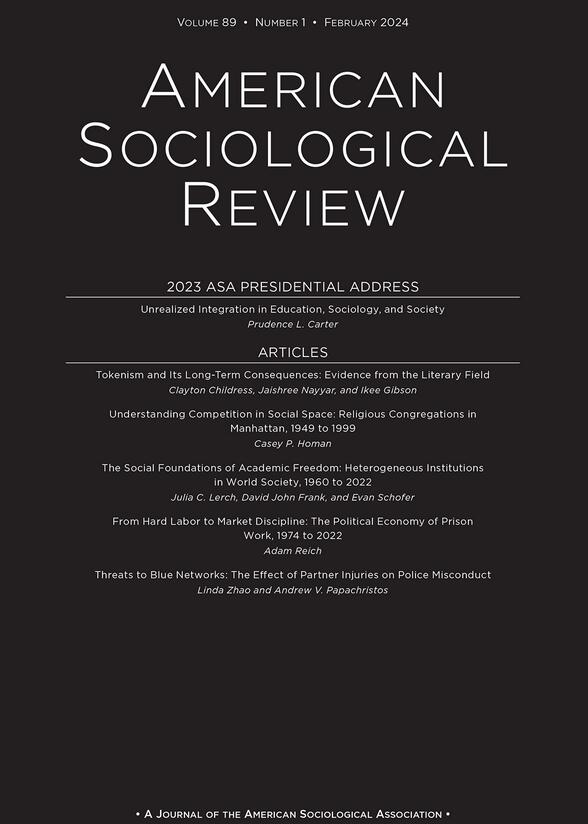新思想如何在科学中传播
IF 6.2
1区 社会学
Q1 SOCIOLOGY
引用次数: 4
摘要
什么条件使新颖的智力贡献能够扩散并融入后来的科学工作?先前的工作倾向于关注整个文化产品,如专利和文章,并强调外部社会因素的重要性。本文将概念作为思想的反映,并确定了社会因素和内部智力结构对概念扩散的综合影响。为了发展这一观点,我们使用计算技术来识别20年来(1993年至2016年)在科学网中引入的近60000个新想法,并跟踪它们在3800万份后来的出版物中的传播。我们发现,当新思想在社会和智力上产生共鸣时,它们会传播得更广。当新思想到达由无关作者组成的庞大网络,实现一致的智力使用,与其他突出思想联系在一起,并符合现有的研究传统时,它们就会成为科学的核心概念。这些生态条件在与环境建立关系后,在一个想法的职业生涯中发挥着越来越重要的作用。这项工作通过超越产品,关注思想本身的内容,并应用关系视角,认真对待其成功的偶然性,从而推进了对科学思想的系统研究。本文章由计算机程序翻译,如有差异,请以英文原文为准。
How New Ideas Diffuse in Science
What conditions enable novel intellectual contributions to diffuse and become integrated into later scientific work? Prior work tends to focus on whole cultural products, such as patents and articles, and emphasizes external social factors as important. This article focuses on concepts as reflections of ideas, and we identify the combined influence that social factors and internal intellectual structures have on ideational diffusion. To develop this perspective, we use computational techniques to identify nearly 60,000 new ideas introduced over two decades (1993 to 2016) in the Web of Science and follow their diffusion across 38 million later publications. We find new ideas diffuse more widely when they socially and intellectually resonate. New ideas become core concepts of science when they reach expansive networks of unrelated authors, achieve consistent intellectual usage, are associated with other prominent ideas, and fit with extant research traditions. These ecological conditions play an increasingly decisive role later in an idea’s career, after their relations with the environment are established. This work advances the systematic study of scientific ideas by moving beyond products to focus on the content of ideas themselves and applies a relational perspective that takes seriously the contingency of their success.
求助全文
通过发布文献求助,成功后即可免费获取论文全文。
去求助
来源期刊

American Sociological Review
SOCIOLOGY-
CiteScore
13.30
自引率
3.30%
发文量
35
期刊介绍:
The American Sociological Association (ASA) is a non-profit membership association established in 1905. Its mission is to advance sociology as a scientific discipline and profession that serves the public good. ASA is comprised of approximately 12,000 members including faculty members, researchers, practitioners, and students in the field of sociology. Roughly 20% of the members work in government, business, or non-profit organizations.
One of ASA's primary endeavors is the publication and dissemination of important sociological research. To this end, they founded the American Sociological Review (ASR) in 1936. ASR is the flagship journal of the association and publishes original works that are of general interest and contribute to the advancement of sociology. The journal seeks to publish new theoretical developments, research results that enhance our understanding of fundamental social processes, and significant methodological innovations. ASR welcomes submissions from all areas of sociology, placing an emphasis on exceptional quality.
Aside from ASR, ASA also publishes 14 professional journals and magazines. Additionally, they organize an annual meeting that attracts over 6,000 participants. ASA's membership consists of scholars, professionals, and students dedicated to the study and application of sociology in various domains of society.
 求助内容:
求助内容: 应助结果提醒方式:
应助结果提醒方式:


